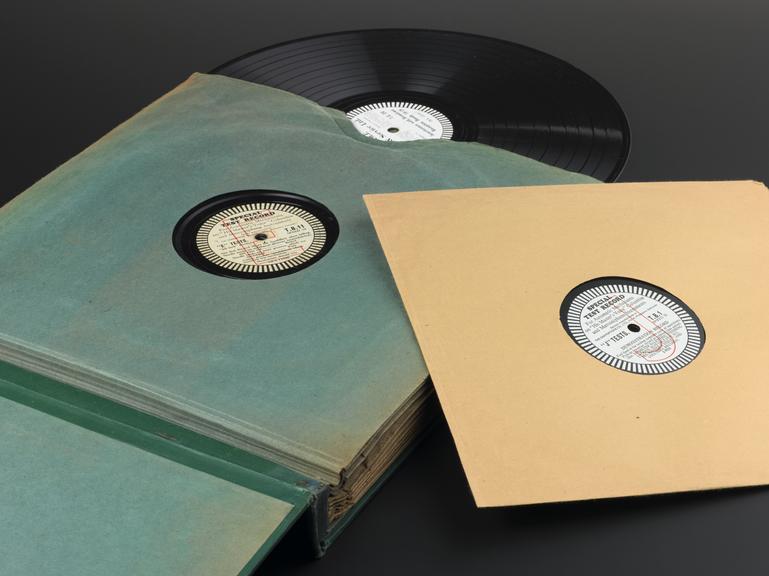Record album for 12-inch gramophone records, title on front cover ‘E.M.I. SALES & SERVICE LTD. / TEST RECORDS’, made by the Gramophone Company Ltd (EMI), Hayes, Middlesex, British,1930-1940
Record album for 12-inch gramophone records, title on front cover ‘E.M.I. SALES & SERVICE LTD. / TEST RECORDS’, made by the Gramophone Company Ltd (EMI), Hayes, Middlesex, British,1930-1940
More
Autochange gramophones enabled a number of short-play 78 rpm records to be played in succession without the listener being required to be constantly getting up to change the records manually. The mechanism to do this was complicated and could get out of adjustment, so makers of such gramophones made sets of special discs for supply to dealers and repairers to test the various mechanical movements involved. Such discs had no entertainment content and were discarded once such autochangers became obsolete. The discs being acquired are rare survivors and provide an insight into the way records were listened to in the home in the 1930s to 1950s and the mechanical complexity of autochange gramophones.


















